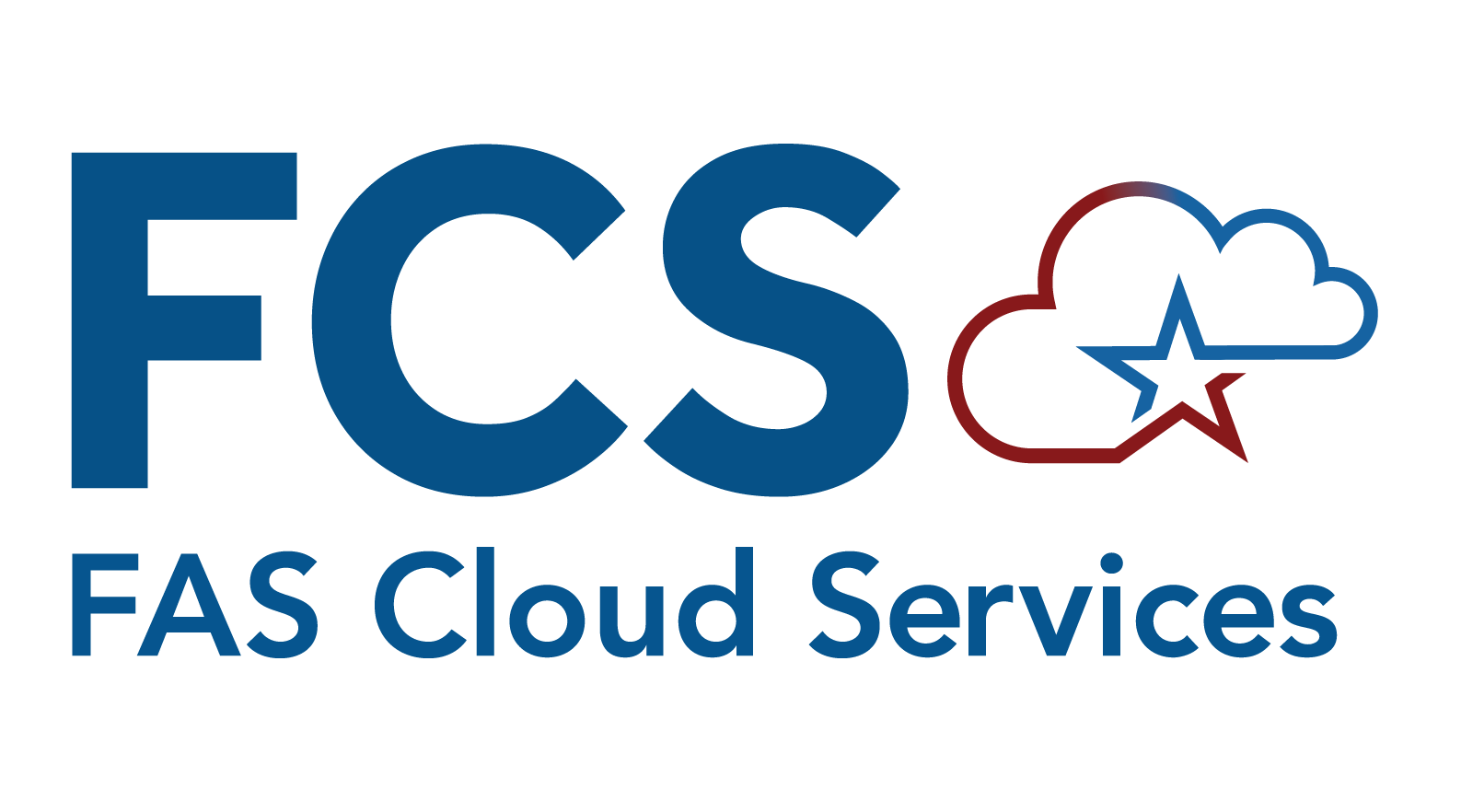Technical Approach
The focus of the approach for this modernization has been leveraging the FCS cloud ecosystem to provide the business functions that TAMS users need. The TAMS Cloud-based Architecture and Strategy is compared based on services and technologies supported within FAS Cloud Services. FCS aligns to GSA Enterprise Technology Standards and by doing so, ensures all solutions are due the same. In the section below a walk through is performed based on the TAMS reference architecture provided and what FCS supports.
Technical Approach
FAS Cloud Services (FCS) has developed an evaluation playbook that reviews solutions against cloud readiness. The readiness review evaluates several criteria which include business objectives, technology objectives and future actions required to support the TAMS system objective. Based on the evaluation factors FCS can determine solution alignment to FAS Cloud Objectives and alignment to FCS technologies.
Based on the business requirements, TMSS elected to utilize FAS Cloud Services’ (FCS) EBTA (Everything but the App) Cloud Play to integrate with the FCS Cloud Ecosystem. Using the “out of the box” features provided through the EBTA option, TMSS was able to select an appropriate, modern, technology stack and leveraged several cloud native technologies.
TAMS FCS Stack:
- tams-api:
- Apache24
- JBoss7
- Postgres
- tams-ui:
- Apache24
- NodeJs88
- DevOps: FreedomPipeline
Benefits of Cloud Modernization
- Monitor federal agency compliance with transportation pre-payment audit requirements.
- Support other federal agencies in improving their transportation pre-payment audit processes.
- Conduct transportation post-payment audits.
- Issue Notices of Overcharge (NOCs) to TSPs for any identified overpayments.
- Process payments from TSPs to settle NOCs.
- Pursue collection actions against TSPs for overdue NOCs.
- Evaluate TSP protests and claims challenging the validity or accuracy of a NOC and determine a resolution based on presented evidence.
- Adjudicate transportation-related billing disputes between TSPs and federal agencies, when requested.
- Handle bankruptcies and litigation related to TSPs with outstanding NOC debts.
- Improves transportation data tracking.
- Improves accuracy of business transactions.
Technology Alignment
The table below outlines the objectives analyzed based on FCS and the TAMS System.
1 = does not align | 2 = barely aligns | 3 = some alignment | 4 = foundational alignment | 5 = aligned
| Business Line Objectives / Requirements | FCS | TAMS |
|---|---|---|
| Business Objectives: | ||
| E.g. Create a user-centered digital presence to support the E.g. buying and selling experience delivered through the Federal Marketplace. | 5 | 5 |
| Requirements (Non Functional / Performance): | ||
| E.g. DB Backup: The TAMS (e.g., database structure, data) is backed up at least every 24 hours to avoid data loss. | 5 | 5 |
| E.g. Elasticity: The TAMS environment elastically scales up and down to meet visitor demand. | 5 | 5 |
| Requirements (Non Functional / Security): | ||
| E.g. EBTA - FISMA low application | 5 | 5 |
| E.g. Application Secret Management (ex: api secret keys, db password, etc) | 5 | 5 |
| Average Score | 5 | 5 |
FCS Objective Alignment
FCS Objective Alignment defines FCS IT Objectives aligned to GSA IT standards which are necessary to measure alignment with target architecture that the TAMS team has proposed. The objective is given a point system to baseline the alignment. By default the FCS objectives are given the highest value which is set to five (5). TAMS team proposed TAMS Architecture is measured against the baseline to define how much the proposed solution aligns to the FCS objective. The scale goes from one (1) to five (5) with one (1) being the least optimal value.
The table below outlines the objectives analyzed based on FCS and the TAMS proposed solution.
1 = does not align | 2 = barely aligns | 3 = some alignment | 4 = foundational alignment | 5 = aligned
| FCS Objectives | FCS | TAMS |
|---|---|---|
| Enterprise IT Alignment Leverage existing FAS Cloud Services that is compliant with GSA enterprise standards. | 5 | 5 |
| Networking Minimal attack surface, leveraging inline network capabilities as well as AWS ingress protection. Encryption of data in Transit leveraging TLS 1.2 Environment segregation between Upper Environments and Lower Environments. | 5 | 5 |
| Continuity of Operations Ability to support High Availability, Resiliency, Fault-Tolerant and Auto-scalability Capability | 5 | 5 |
| Identity Access Management IDP brokerage for services with approved GSA MFA | 5 | 5 |
| Continuous Integration / Continuous Delivery Achieve near zero downtime deployment for all environments. Measurable availability that meets or exceeds AWS standard SLAs. | 5 | 5 |
| Monitoring and Logging Actions fully cataloged and tracked to provide full insight into all automated deployments. | 5 | 5 |
| Data Storage Data sets are easily accessible for any manipulation needs. | 5 | 5 |
| Data Visualization Capability to access data sets, and develop dashboards and reports, that integrate with system(s). | 5 | 5 |
| Data Aggregation Ability to support data lake and data activities designed to aggregate. | 5 | 5 |
| Security Secure by Design, all components of the FCS undergo an independent process that ensures baselines are followed and aligned to GSA Security Standards. | 5 | 5 |
| Average Score | 5 | 5 |


